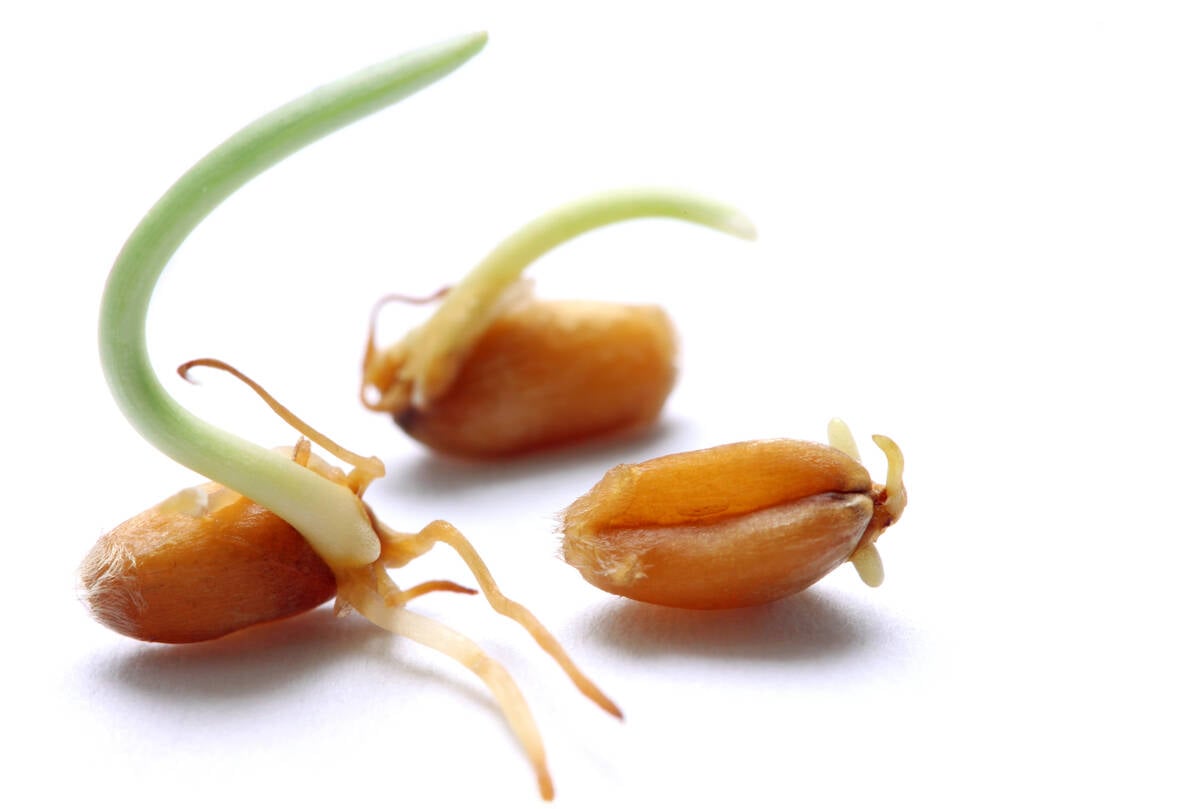The science of the Schmeiser trial isn’t simple.
Anyone – such as the judge – who must understand the tests Percy Schmeiser’s attackers and defenders are using as evidence will need to know how DNA works, how genetic engineering is done, how DNA is tested, how pollen spreads and how crops grow and breed.
“It helps me. Thank you,” said judge Andrew MacKay after one simple explanation of basic cell structure from Monsanto scientist Doris Dixon.
She had just described cells as being like eggs, in which the yolk is the nucleus, the white is the cytoplasm and the shell is the cell wall. She then described where and how DNA and RNA reside within cells.
Read Also

Manitoba farmers fight sprouted wheat after rain
Rain in mid-September has led to wheat sprouting problems in some Manitoba farm fields.
Dixon, a scientist who would have made a great high school science teacher, described the structure of DNA as like a “rope ladder,” in which strands are connected to form base pairs. Each connection is like a rung on the ladder.
There are only four types of bases, she said, which make up a four-letter vocabulary for DNA. Genes are like words made from the letters, and collections of genes make up sentences that, combined with other sentences, make up chapters, that then combine to form a book. After enough books are collected, an encyclopedia of DNA is produced, which is the genome – or entire genetic makeup – of an organism.
Genetic engineering, Dixon explained, relies on breaking the DNA strand in two, changing the metaphor. Now the strand is like a zipper, and after unzipping a piece of the strand, a new bit is zipped in its place.
Schmeiser’s lawyer, Terry Zakreski, appears to have spent much time acquainting himself with the intricacies of DNA testing. When cross examining Monsanto scientists, he zeroed in on links in the testing chain that could break the tests’ reliability.
He has asked whether contaminated laboratory instruments could have spoiled tests, or if poor germination and later thinning of plants growing in the lab could have skewed results, or if the poor quality of original samples from Schmeiser’s crop could have created a false impression of the entire crop. Zakreski asked questions that hint at possible specimen tampering by Monsanto.
This lawsuit was fought in federal court because Monsanto claims Schmeiser broke its patent on the Roundup Ready gene. Federal court hears all patent cases.
Roger Hughes, the lawyer leading Monsanto’s suit against Schmeiser, said in an interview that intellectual property cases such as this one used to be rare.
“For a long time (intellectual property) was a fringe of the legal profession,” said Hughes, whose Toronto law firm specializes in the area.
“But from the shy and retiring person, we’ve become the glamor girl of the legal profession.”
That’s because scientific innovation has become a driving force in the economy. The challenge for lawyers and for courts, Hughes said, is to melt down complex issues into one or two relevant issues and then sort out who’s right and wrong.
But to do that, the lawyers involved have to understand complex issues. Hughes said his firm of 30 lawyers tries to hire people who already have some technical understanding of intellectual property in areas like science, engineering or the arts. Hughes has a degree in mechanical engineering.
After being handed a case to prosecute or defend, the lawyer has to find an expert or two who can describe the basics of the subject. In some sophisticated areas there are only a half-dozen or a dozen experts in the world, so finding them can be difficult. Getting one who can explain the issue simply is also a challenge.
“You can’t always find that,” said Hughes.














